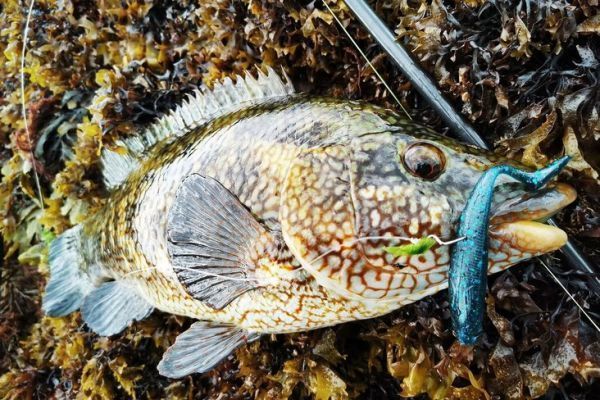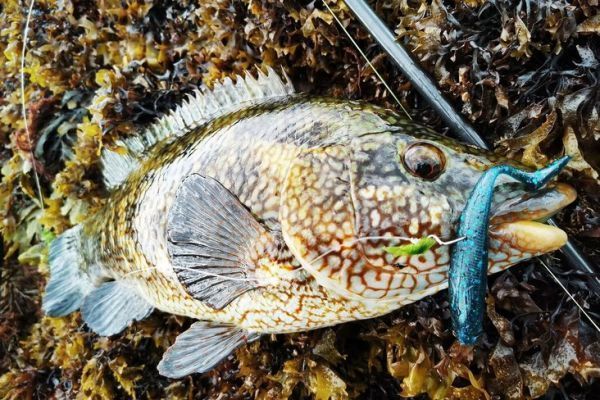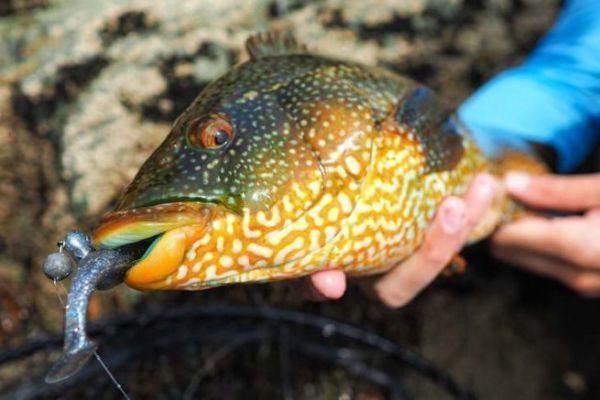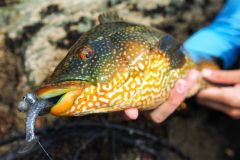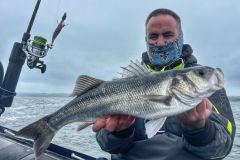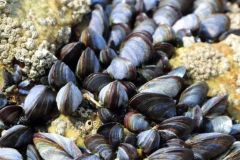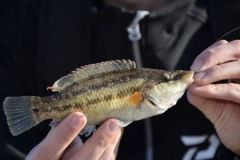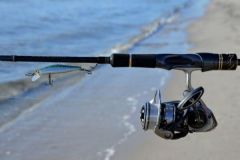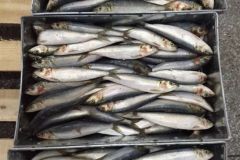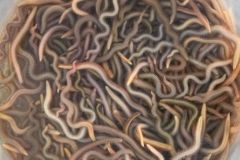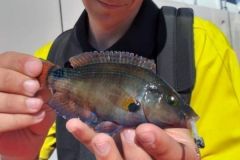The old lady, a little-known fish
The oldsmelt, also known as labre, is a fish that colonizes rocky areas. It is characterized by its coat color, which varies from brown to red, making it a magnificent fish to catch.
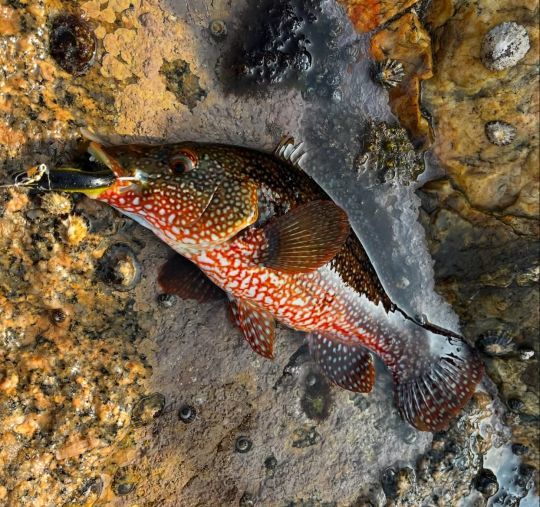
It is present on our coasts from spring to early winter, and likes rocky areas where food is abundant. Crabs, mussels, shrimps and other small crustaceans make up its diet.
It has a strong jaw that will require the use of suitable hooks to successfully bring out this fish. It often hides in riprap and under rocks. This means that once hooked, it must be quickly extracted from the bottom, otherwise it will return to its shelter.
How do you locate the fishing areas for old fish?
Satellite imagery makes it easy to spot the best fishing grounds for this fish. Rocky areas with deep faults and rocky points are the perfect place.
In these images, they are highlighted by red lines. In the middle of these zones, the depth is greater and the old fish are often found along the drop-offs.
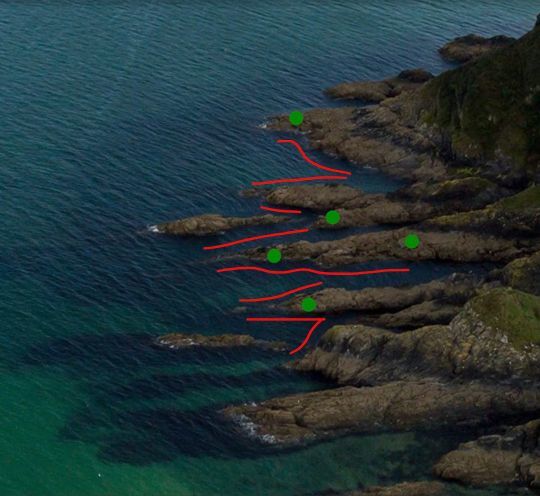
The green dots are where the angler will be. The red areas are where the old ones will surely be hidden.
Strolling along the foreshore at low tide, you'll be able to spot other areas suitable for fishing this fish. Taking into account their diet, areas with mussels will often be colonized by fish once the tide comes in.
What's in it for you?
This fish is unjustly shunned by sea anglers. And yet, fishing for it is an excellent way to learn, and allows the seasoned angler to perfect his techniques.
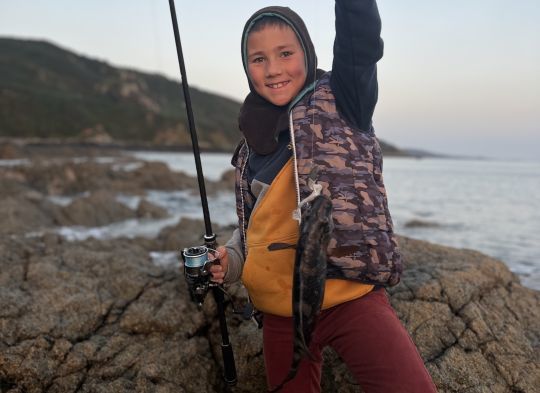
They are abundant along our coasts, which means you can multiply your catches during an outing. As mentioned above, once hooked, they will try to return to their shelter. This will require you to master this fish, which can be quite large, with authority.
In battle, you're sure to feel the headbutts, which are no match for those of a big bass. The touch can be discreet, and you'll need to strike at the right moment to land it. Once again, this is the perfect opportunity to perfect your technique.
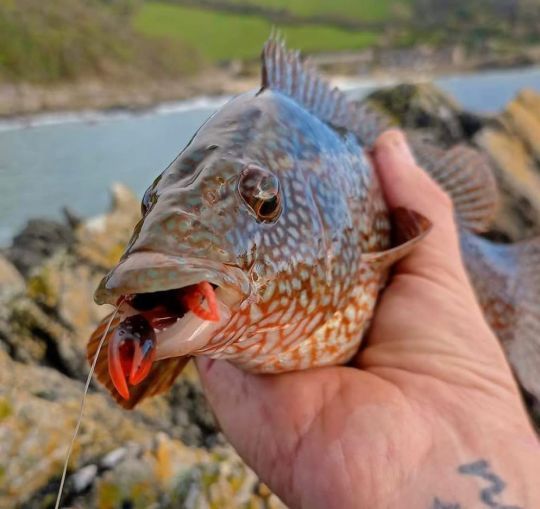
Last but not least, it's a robust fish that can be easily returned to the water if handled with a minimum of care.
The following article will deal with the equipment I use specifically for this fishery, as well as technique.
